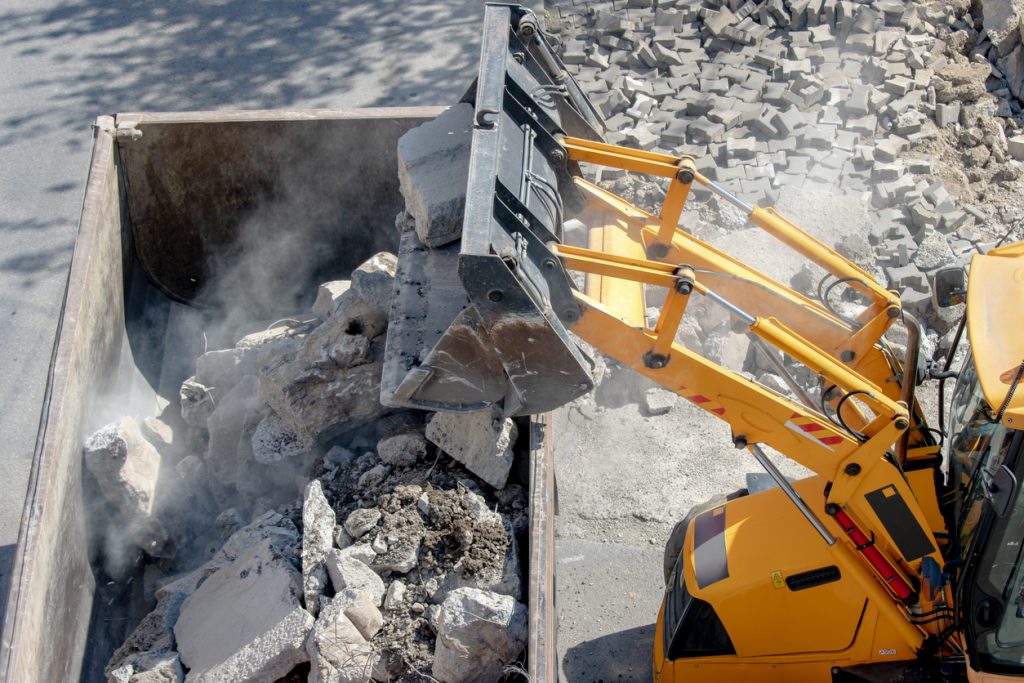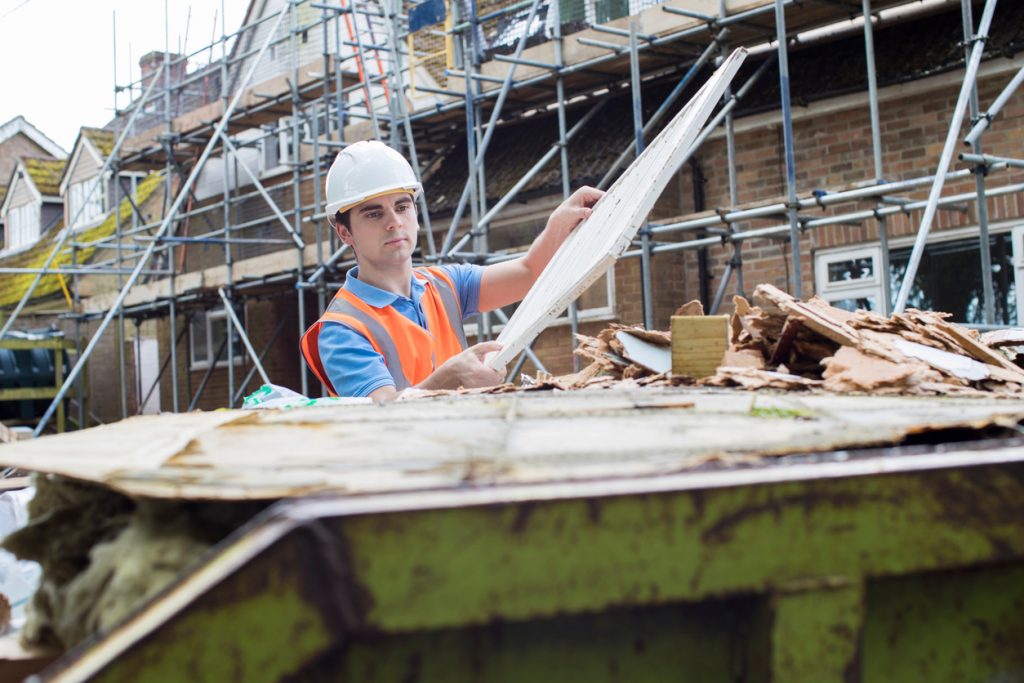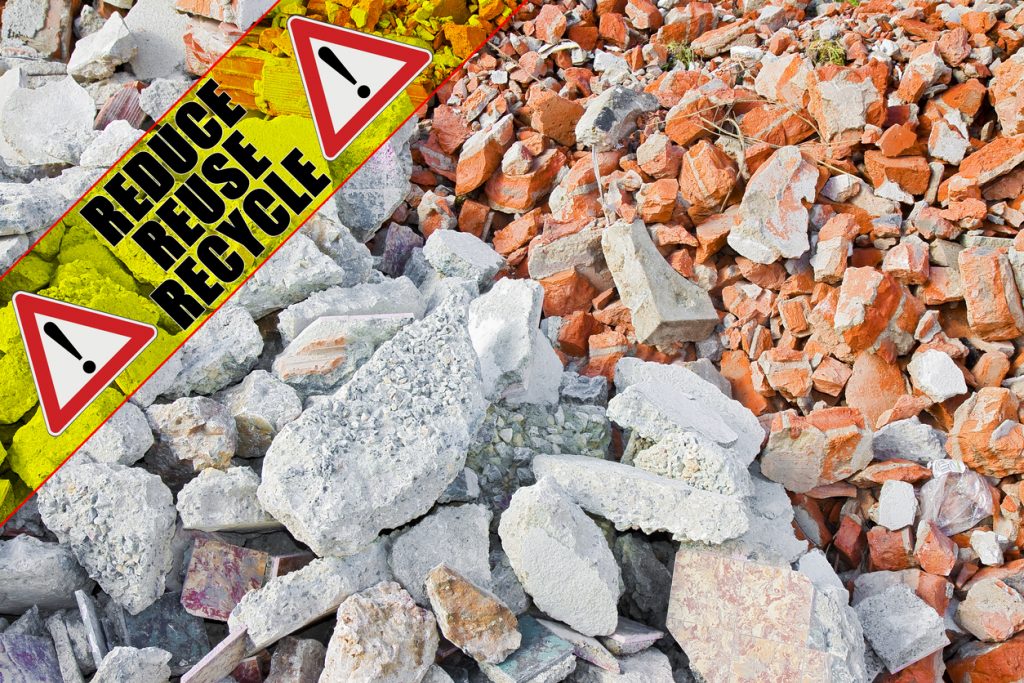Reducing waste in construction isn’t just about being eco-friendly; it’s also an effective cost-cutting exercise. With construction producing tons of waste globally each year, it’s crucial to adopt sustainable practices. At AE Faulks, we champion the “Reduce, Reuse, Recycle” mindset, leading the way in promoting sustainable practices.
This blog offers practical guidance on efficiently managing construction waste, aiming to reduce costs while promoting sustainability. Embracing these principles not only benefits the environment but also makes for a healthier bottom line.
Waste Generation in the UK Construction Industry: Statistics and Implications
In the UK, the construction industry plays a significant role in waste generation. According to recent statistics, the UK generated a total of 222.2 million tonnes of waste in 2018, with an increase from the previous tally in 2016. The construction sector is a major contributor to this figure. Specifically, construction activities are responsible for 62% of the UK’s total waste output, with 32% of all construction industry waste ending up in landfills, and an alarming 13% of construction materials are reported to go straight to waste without even being used.
These statistics highlight the urgent need for more rigorous waste management practices within the UK construction industry to reduce the environmental impact and move towards more sustainable and efficient use of resources.
What is Construction Waste?
Construction waste refers to the materials left over from building, renovating, or tearing down structures. It covers everything from extra or broken materials, no matter the size of the project, and can come from any stage of construction.
The Different Types of Construction Waste
Construction waste isn’t just one single thing; it’s a broad term covering many different unwanted materials. Here are some common types:
- Packaging: This includes the materials used to protect construction items during delivery, like plastic, cardboard, and timber pallets.
- Surplus Materials: Sometimes, there are extra materials left over from a project, like bricks, concrete, wood, metal, and glass.
- Damaged Materials: These are items that can’t be used because they’re broken or ruined, like cracked tiles or spoiled plasterboard.
- Dredging Materials: This waste comes from clearing waterways or buildings in marine areas, like for infrastructure projects.
- Hazardous Waste: Some construction waste, like lead, asbestos, or chemicals, is dangerous, so it needs special handling and disposal.
The Environmental and Economic Impact of Construction Waste
Some of the consequences of excessive construction waste are:
- Environmental Impact: Construction waste fills up landfills, polluting the land and possibly contaminating soil and water.
- Economic Impact: Construction waste costs society money and resources. The cost of dealing with waste and disposal adds up.
- Social Impact: Excessive construction waste can lead to dissatisfaction among local communities due to increased pollution, noise, and disruption caused by waste disposal activities.
- Health Impact: Improper handling and disposal of construction waste can pose health risks to nearby residents and workers due to exposure to hazardous materials and pollutants.
- Aesthetic Impact: Construction waste accumulation can detract from the visual appeal of an area, negatively impacting property values and the overall attractiveness of neighbourhoods.
Adopting the “Reduce, Reuse, Recycle” strategy isn’t just about being eco-friendly; it also boosts efficiency and saves money on-site. By grasping the impact of construction waste, industry players can tackle it more effectively with smarter strategies.
Reduce: Planning and Management Strategies
Efficient waste management in construction begins with cutting down waste from the start. Here are key strategies to make big reductions:
- Plan Early to Reduce Waste: Thorough planning helps predict waste and find ways to avoid it. Setting waste reduction goals during design not only helps the environment but also saves money. For efficient project planning, make sure you’ve considered your plant hire needs at the start of your project.
- Use Standard Sizes to Cut Scrap: Designing with standard material sizes can hugely cut leftover scraps. This “material optimisation” method makes materials go further, saving resources and money on disposal.
- Order Just Enough to Avoid Waste: Ordering too much material is a big waste. Using just-in-time (JIT) ordering means materials arrive when needed, cutting storage and damage risks. Many of the larger building suppliers provide digital tools to help you calculate exactly what’s needed, reducing excess.
- Go Lean to Trim Waste: Lean construction focuses on adding value while cutting waste. Streamlining processes, coordinating better, and improving continuously all help. It’s about using resources efficiently, sticking to schedules, and avoiding non-essential tasks.
By focusing on reducing waste first, construction projects can make a big dent in waste generation, moving towards more sustainable practices.
Reuse: Extending the Lifecycle of Your Materials
For better material reuse on-site, it’s important to set clear rules for sorting and storing, create dedicated storage areas for reusable materials, and teach workers how to recognise and keep these items. Also, planning to reuse materials from the beginning makes it easier to use them again later on.
Inspecting and sorting materials for potential reuse is key. Check materials for damage, cleanliness, and if they’re suitable for reuse. Remove non-structural items like doors and windows carefully to avoid damage, and organise materials into categories for easier identification for different reuse purposes.
Ideas for Reusing Materials
Here are some creative ideas for reusing materials in different construction phases:
- Old bricks and tiles can be cleaned and reused for new buildings or landscaping projects.
- Surplus wood can be used for framing, temporary supports, or incorporated into new design elements.
- Metals can be melted down and re-fabricated into new components.
- Broken concrete can be crushed and used as a base for roads or as recycled aggregate in new concrete.
Recycle: Efficient Material Recycling Practices
As we’ve discussed, efficient material recycling practices are vital in construction to minimise environmental impact and optimise project costs. So, let’s take a look at some of the ways site operators can ensure they’re following effective recycling practices.
Clear on-site sorting systems are crucial for effective construction recycling efforts. These systems simplify the process by clearly identifying recyclables and minimising contamination risks.
- Streamlined Process: Clear identification of recyclables makes sorting easier.
- Reduced Contamination: Minimises the chances of mixing recyclables with non-recyclables.
Designated storage areas further improve efficiency by preventing mixing and assisting with transportation to recycling facilities.
- Preventing Mixing: Dedicated storage areas reduce the risk of mixing recyclables with non-recyclables.
- Aiding Transportation: Easy access to designated storage areas simplifies transportation to recycling facilities.
Where possible, collaborating with local recycling plants can further streamline the recycling process and is equally important in promoting circular economy principles.
- Proper Waste Processing: Ensures that recyclable materials undergo appropriate processing.
- Acceptance of Recycled Materials: Ensures the acceptance of recycled materials, promoting sustainable reuse.
Using efficient waste management and recycling practices is essential and can be highly beneficial in today’s construction industry. By following our advice, you can make a big difference in creating construction sites that use resources wisely and are more environmentally friendly.
We offer a variety of plant machinery to help with your site waste management, such as our mini digger hire, tracked excavator hire, or tipper hire. If you need reliable machinery to boost your project’s efficiency, get in touch with us today.
- Plant Hire in Nottingham
- Plant Hire in Leicester
- Plant Hire in Derby
- Plant Hire in Lincoln
- Plant Hire in Rutland
- Plant Hire in Northampton
- Plant Hire in Stafford
- Plant Hire in Warwick
- Plant Hire in Cambridge
- Plant Hire in Birmingham
- Plant Hire in West Midlands


















